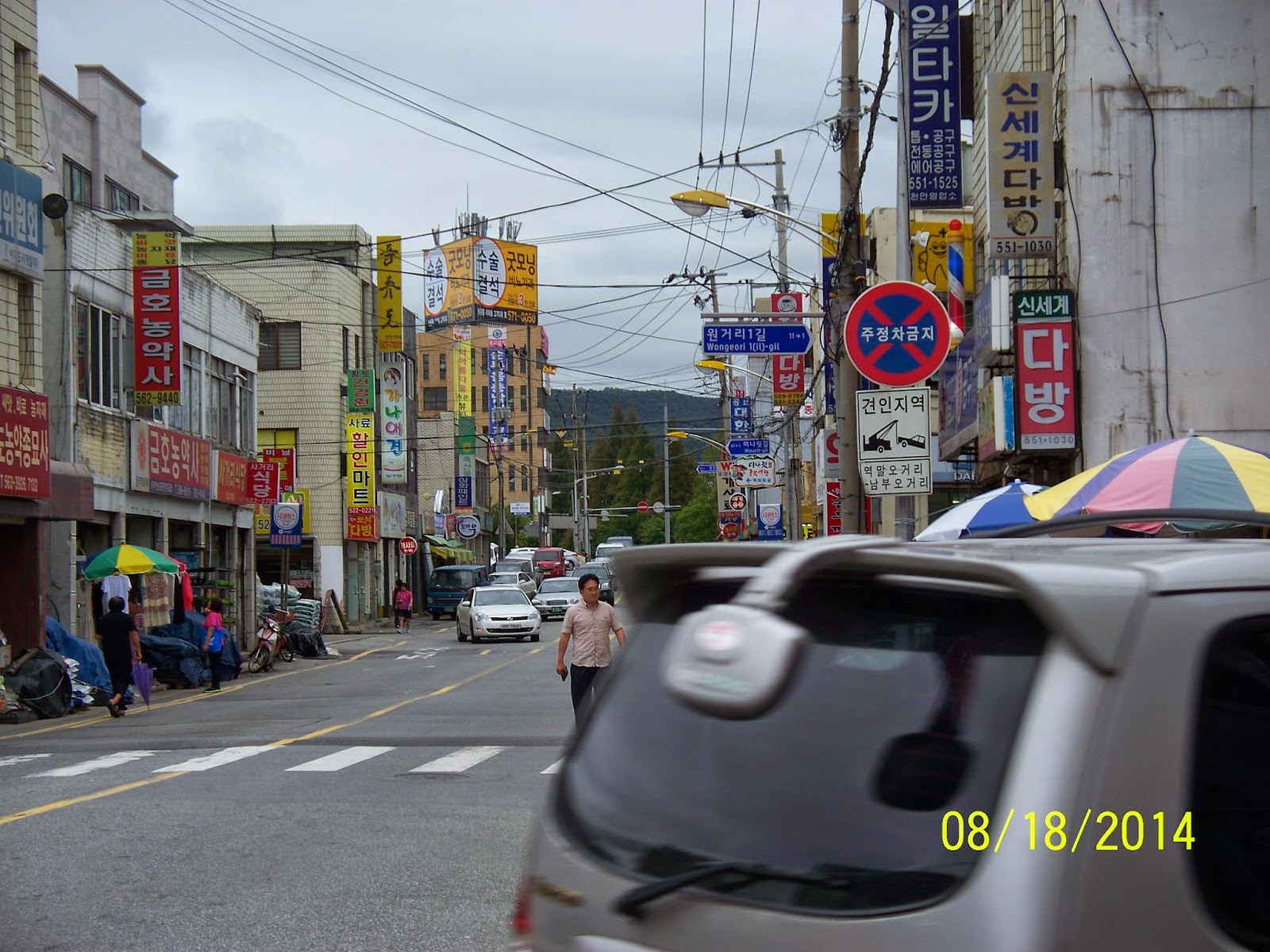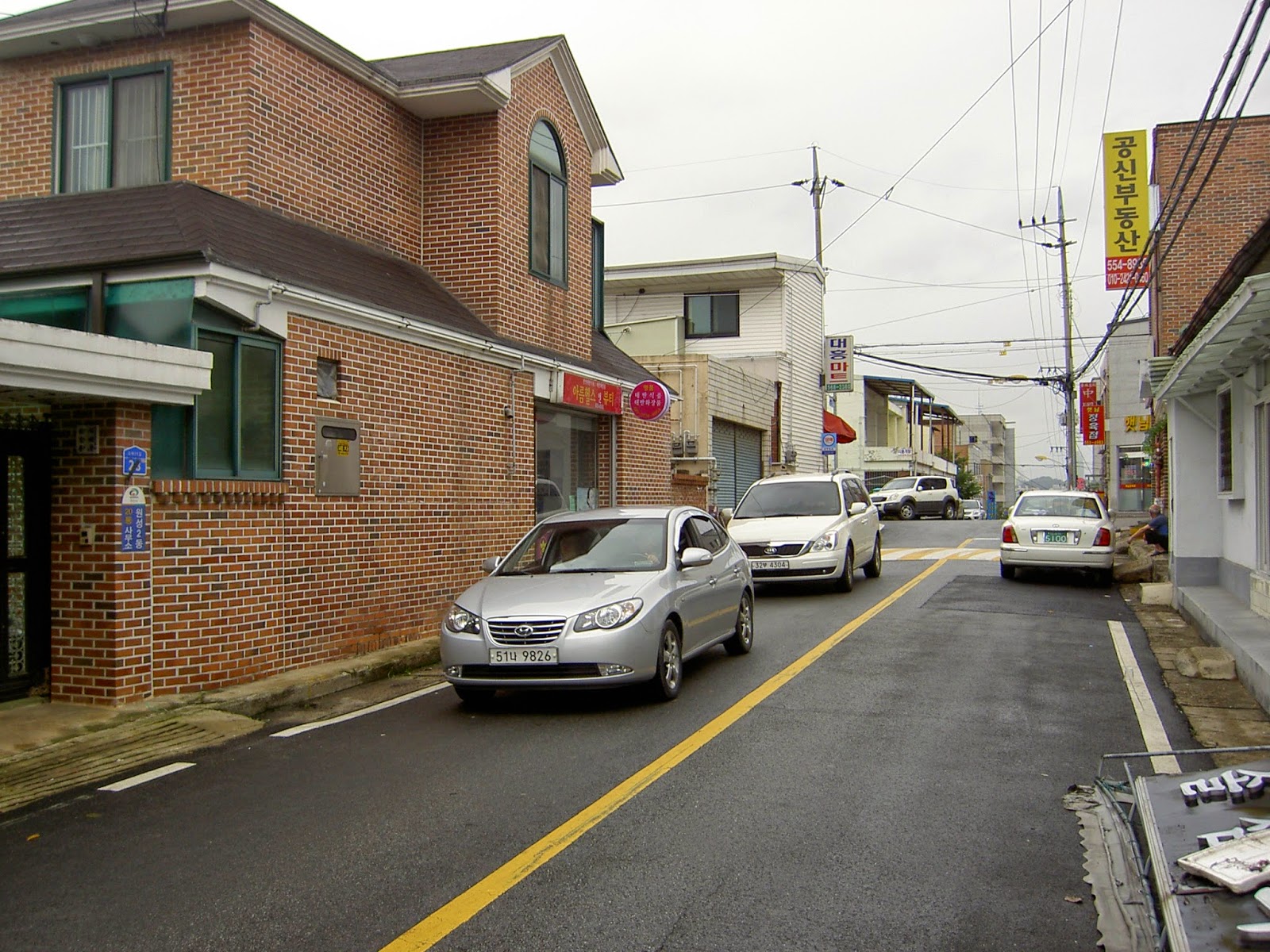BIZARRE FUN!
Issues impelled my return to the US in September of 2015. Though this is a temporary return it conveniently provides me an avenue of cultural comparison with the US. The most obvious comparison between South Korea and the US is the comparison of economic philosophies and economics. For example, South Korea was a country of total devastation at the end of the Korean War in 1953. A very small country lacking natural resources Korea had no choice but to develop its' human potential to grow economically. Using the paradigm of Japanese post World War II resurgence but lacking the financing that Japan received to assist in growing its' economy, Korea struggled to both emulate Japan as well as to find its' own way.
Today's visitor to South Korea finds themselves in a first world nation, a nation that has great economic power and yet provides its' citizens freedom and support. Public transportation is readily available, cheap, and of high quality. Health care services are very high quality and very inexpensive. For example, suffering a mild illness, my friend to me to visit a doctor. The total cost for the doctor's examination and one and one half week's of medication (three different pills each day) was only $17.00. In the jobs arena, the situation is that, like elsewhere in first world countries, many jobs are to some degree high tech. The greatest difference is in the way the jobs with the larger corporations are acquired and worked. Yet the overarching story in Korea is the strong government support of Korean jobs for improving the Korean economy thus resulting in the country having one of top top producing economies in the world.
The US by comparison is a country that has been seeking to push the best jobs away somewhere outside the country. The politicians, mostly conservative Republicans who are financed by corporate donors, have found that they have financially benefited by supporting their corporate masters by actively working towards job elimination and job degradation in this country. In fact, the Republican presidential candidate in the 2012 election, Mitt Romney, created and ran a company called Bain Capital which made tons of money from corporate masters who sought to improve their profit margins by helping them to move their businesses overseas. Ironically, one business in Galena, Illinois, was suffering this very fate during the campaign for the presidency of the US. Comically, these selfsame politicians publicly deny they engage in these activities despite obvious evidence to the contrary and their supporters actually believe the politicians false assertions of denial.
Politics aside, the US and a few other countries, though not any Asian countries such as Korea, support the strange annual custom of 'Halloween' festivities at the end of the month of October. This custom is a vestige of the period of time centuries ago when Christianity was pushing to find acceptance among peoples of other religions of very different natures.
Among these people of 'pagan' religions the Celts had a celebration called 'Samhain' (pronounced 'sah-win'). From the website Halloween History, "The festival of Samhain is a celebration of the end of the harvest season in Gaelic culture. Samhain was a time used by the ancient pagans to take stock of supplies and prepare for winter. The ancient Gaels believed that on October 31, the boundaries between the worlds of the living and the dead overlapped and the deceased would come back to life and cause havoc such as sickness or damaged crops" and often involved bonfires. In an effort to address the spirits, "Masks and costumes were worn in an attempt to mimic the evil spirits or appease them." (ibid). Christians absorbed this celebration and modified in their own way such as to create a a celebration for 'All Saints Day' which was established to be on November 1st. In addition, the celebration underwent a name change from Samhain to 'All Hallows Eve' (thus Halloween).
"In Ohio, Iowa, and Massachusetts, the night designated for Trick-or-treating is often referred to as Beggars Night.
Part of the history of Halloween is Halloween costumes. The practice of dressing up in costumes and begging door to door for treats on holidays goes back to the Middle Ages, and includes Christmas wassailing. Trick-or-treating resembles the late medieval practice of “souling,” when poor folk would go door to door on Hallowmas (November 1), receiving food in return for prayers for the dead on All Souls Day (November 2). It originated in Ireland and Britain, although similar practices for the souls of the dead were found as far south as Italy. Shakespeare mentions the practice in his comedy The Two Gentlemen of Verona (1593), when Speed accuses his master of “puling [whimpering, whining], like a beggar at Hallowmas.”
"Trick-or-treating, is an activity for children on or around Halloween in which they proceed from house to house in costumes, asking for treats such as confectionery with the question, “Trick or treat?” The “trick” part of “trick or treat” is a threat to play a trick on the homeowner or his property if no treat is given. Trick-or-treating is one of the main traditions of Halloween. It has become socially expected that if one lives in a neighborhood with children one should purchase treats in preparation for trick-or-treaters.
"Trick-or-treating spread from the western United States eastward, stalled by sugar rationing that began in April 1942 during World War II and did not end until June 1947. Early national attention to trick-or-treating was given in October 1947 issues of the children’s magazines Jack and Jill and Children’s Activities, and by Halloween episodes of the network radio programs The Baby Snooks Show in 1946 and The Jack Benny Show and The Adventures of Ozzie and Harriet in 1948. The custom had become firmly established in popular culture by 1952, when Walt Disney portrayed it in the cartoon Trick or Treat, Ozzie and Harriet were besieged by trick-or-treaters on an episode of their television show, and UNICEF first conducted a national campaign for children to raise funds for the charity while trick-or-treating."
When I was growing up in the 1950's and 1960's little attention was paid to the Halloween festivities until just a few days prior to the 31st. Costumes for 'trick or treating' activities were usually thrown together at the last minute and children walked around, as individuals or in groups, for hours unmolested in their treat gathering. Treats were not always candy, children often received fruit such as apples and oranges or other such things.
Older children would often engage in activities such as using toilet paper to decorate houses, schools, or other such places, and the tipping of outhouses and cows were popular activities. Soap was used to decorate windows on buildings and cars. All activities of 'redecoration' were designed to be nondestructive so that simple cleanup quickly restored all things to normal. Real vandalism did occasionally occur but was infrequent because it was strongly frowned upon.
Ironically this event which had long since lost any religious symbolism had become the target of many Christians who unwittingly claimed that Halloween was 'spawned by the devil'. And, there are many these days who continue such claims. These claims actually seemed to serve to enhance the pleasure people took in their Halloween activities. And, there are people who continue to make such claims to this day.
Unfortunately times have changed the culture in many negative ways. Because over the years occasional instances occurred of some bad people would adulterate candy they were giving away many parents became concerned enough that they do not allow their children to walk from door to door 'trick or treating'. The effect of this has been the elimination the hours of walking exercise and fun with siblings and friends in their search of candy. Instead, often such children attend 'Halloween' parties where they will receive their loads of candy but without the benefit of exercise.
Further, those who do 'trick or treat' often do so for the last two or three days of the month as opposed to engaging in these activities on one night only.
More, Halloween has become heavily commercialized. People now spend BILLIONS of dollars on Halloween decorations and candy beginning at the first of August! Personally I am disgusted by this. Halloween in my mind and from my experience should simply be a night of fun and festivities, but it has evolved into something far from that. Thus, I am not surprised at the amount of outright vandalism and destruction that occurs at the end of October.
Still, I recognize that there are really good points that remain with Halloween. People do get together and have great fun though mostly through parties and the overall mood and intention remains a celebration of the young people in ways not otherwise seen. Further, people now enjoy decorating their homes and businesses in ways unique to the event thus providing ephemeral visual and aural decorative touches for others to enjoy.
The lawn decorations in the pictures above demonstrate the level of 'ghoulishness' and outright 'camp' Halloween in the US currently enjoys.

















































































